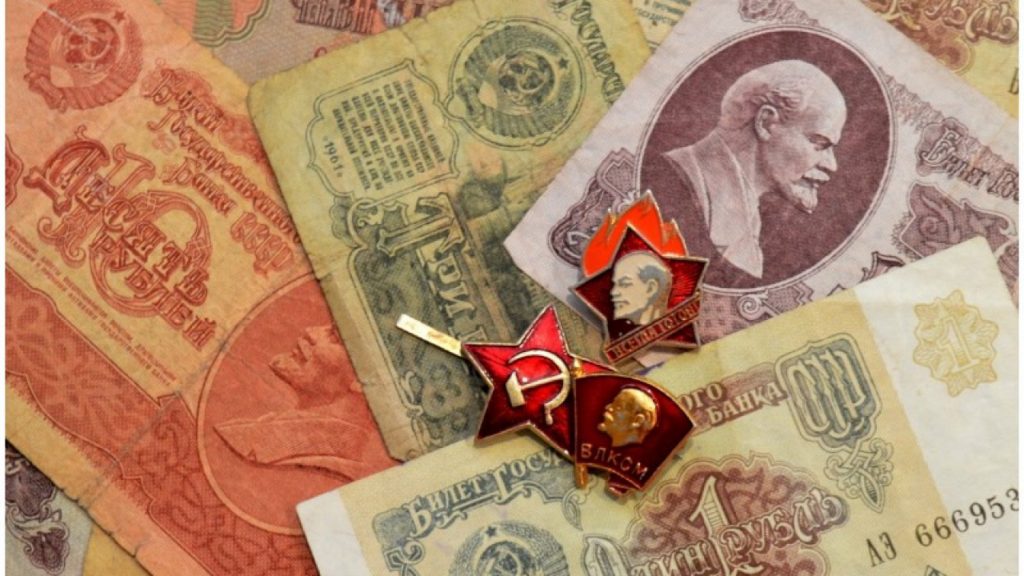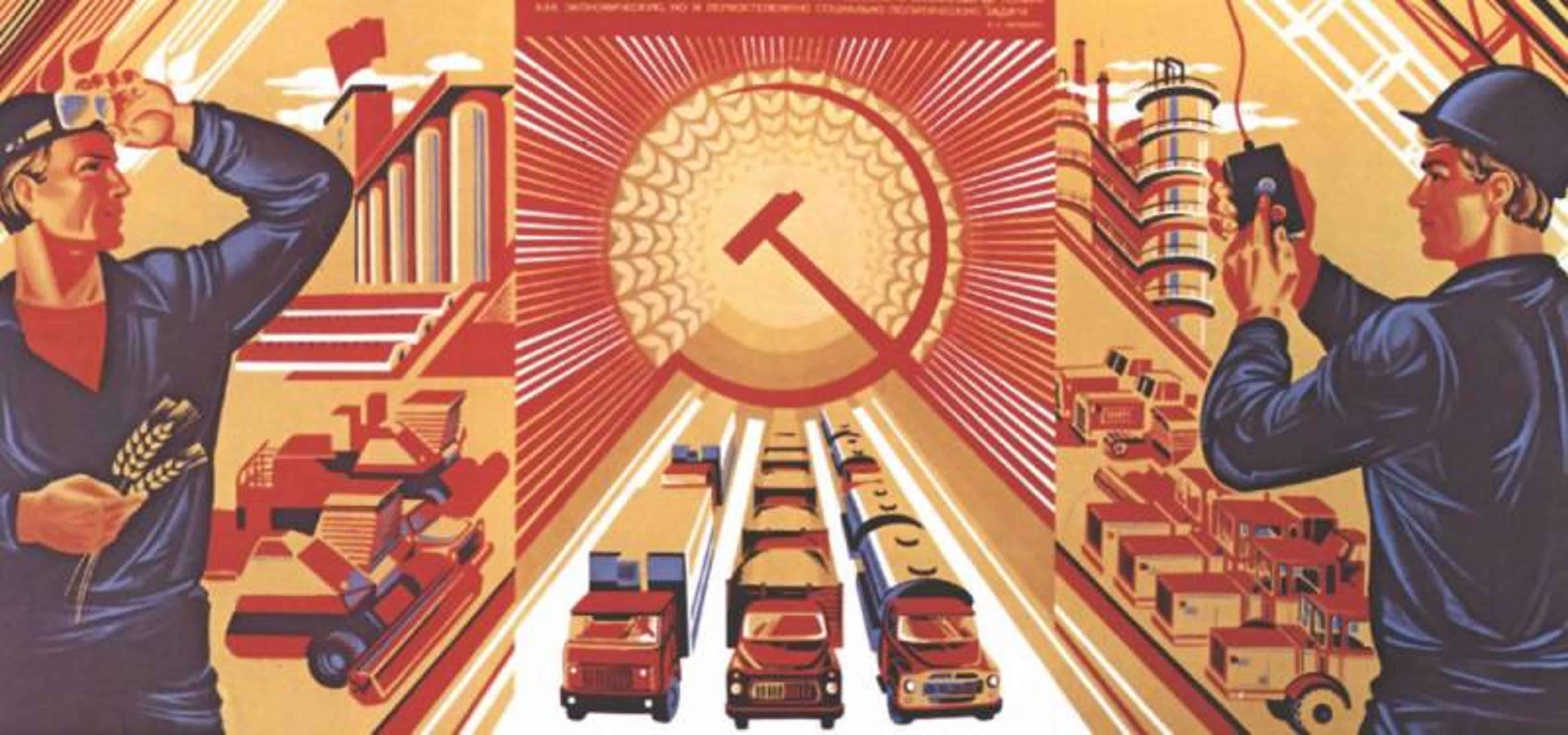
With cost calculation and global pricing strategy dominant in today’s market, have you ever thought of a world without prices? Would a country and its economic system be able to run properly without prices or would it descend into chaos within no time at all?
>Download Now: Free PDF How to Drive Pricing Strategy to Maximise EBIT Growth
Without a cost calculation and global pricing strategy, how does a country trade with other countries? A global pricing strategy definition is one where international firms should consider several factors that influence pricing decisions in international markets. It should have a goal to match the organisation with its environment. If markets extend across borders, then national environments become significant in their development.
This article will discuss the cost calculation and global pricing strategy. Also, examine the Soviet material balance system and its shortcomings from a modern-day pricing perspective, including the contemporary observations of economists Ludwig von Mises and F.A. Hayek.
Table of Contents:
I. Cost Calculation and Global Pricing Strategy: a Real-world Case Study
II. Is Bartering the New World Currency in Global Pricing Strategy?
Capability Building Programmes For Pricing & Sales Teams!

Cost Calculation and Global Pricing Strategy: a Real-world Case Study
Russia’s Utopian Society: A cost calculation and global pricing strategy
Do you think that a world without prices is fantasy land? Think again. Russia already experienced this 100 years ago.
How could a country survive in a world where commercialism is the dominant factor in a country’s progress?
Quite simply, reinvent the rules and create a Utopian society where money does not exist and any profit motives are eradicated.
What to Say When Procurement Asks to See Your Cost Base 🗣 Podcast Ep. 91!
A world where wages are unnecessary to stimulate production and effort, a world where value is determined “according to [individual] ability” (or unit labour models) and production is determined “according to [individual] needs,” yes, imagine that world. Here, the pricing strategies in marketing were obliterated.
Seems strange to think now, but yes, the old Soviet Union tried and failed to build a world where prices did not exist. It failed, leading to the downfall of the Soviet Union.
The Soviet Union Gosplan
The predominant driver of a world without prices was ‘Gosplan.’ Gosplan is an abbreviation of Gosudarstvennyy Planovyy Komitet, an English State Planning Committee. It was a recommendation committee where all economic plans for the Soviet Union were made and then submitted to the Communist Party for approval.
Gosplan removed the study of prices from economic monetary planning. In fact, prices were forbidden. This meant that under Gosplan, there were no proper price mechanisms or monetary calculations to determine the value or drive production.
The Soviet type of planning was made under the special conditions prevailing in the U.S.S.R. The aim of Gosplan was to drive industrialisation, especially for heavy industry. The overriding logic of industrialisation was that steel and machinery were more favourable to industrial growth than textiles and jam – partly due to its military potential.
Planning in the early U.S.S.R.
The kind of economic planning practised in the Soviet Union and in most other communist countries until the 1990s developed during the 1920s and ’30s in the struggle to industrialise the U.S.S.R. The Bolsheviks, led by Vladimir Lenin, seized power in 1917 without any clear notion as to how an economy should be run. The teachings of Karl Marx provided no guidance or indication on how to handle an economy under Communist rule.
The original capacity of the Gosplan was to be an advisory council to the government. Its functions were limited to influencing the level and direction of state investments. But with the introduction of the First Five-Year Plan in the 1930s, it has taken over the overall planning of rapid industrialisation. Including a drastic reduction in the private sector.
During the Russian Revolution of October 1917 there was a lot of social and political unrest unsettling the economic system:
- economic breakdown,
- a refusal of cooperation from officials and managers,
- civil war,
- and uncontrollable inflation
The Bolsheviks seized all industry and trade and nationalised all economic property including land. They declared all private enterprise illegal and demanded that the farmers deliver all farm surpluses to state procurement organs. In turn, money lost all value.
All economic units, except the farmers, were subjected to orders from the government’s Supreme Council of National Economy (V.S.N.Kh.). The Soviet Union devised a system of central planning called material balance planning, which equalizes the total output of the economy with the total input, which would, theoretically, allow for the most equitable distribution of resources and eliminate waste.
Gosplan’s Monetary System & Value / Price calculations
In order to ensure the success of the plan, it was necessary to ensure that inputs from one part of the economy matched outputs from another part of the economy. Gosplan used a methodology called the system of ‘material balances’ which drew up a balance sheet in terms of units of material (i.e. no one used money as part of the accounting process).
The first step was to determine how much steel, cement, wool cloth, etc. would be available for the next year. The calculation was based on the following formula:
Production – exports + imports + or – changes in stocks.
The planning system was a simple one. Gosplan computed the sum of the resources and facilities of the country, set up priorities for their use, and passed down output targets and supply allocations to the different economic ministries. They then delegated it to every branch and enterprise in the entire economy.
Gosplan’s Price issues and limitation
Certainly, the system had its limitations, which includes the absence of meaningful price and cost information. More serious difficulties came from the attitudes and priorities developed into the Stalinist planning system. The administrative system identified by profound economic illiteracy, economic romanticism, and remarkable exaggeration of the real effect that the ‘administrative factor’ had on economic methods and on the motivations of the public.
Soviet critics like Ludwig Von Mises and F.A Hayek pointed out the rigidity of prices, which did not reflect supply-demand conditions. In the absence of monetary calculation, Mises argued it would still be possible to have a system of exchange for consumption goods. Comrades could still barter with each other. However, no such system existed for capital goods. Since the state holds all capital goods, exchanges between enterprises were essentially just a relocation of state property. This left Gosplan with no means to determine whether production was efficient or inefficient.
The planners claimed that it was not their job to regulate the price mechanism but to ensure a balance between supply and demand. But due to the bureaucracy and vast complexities of their task, it was impossible to monitor the distribution of the resources.
Monetary planning process
After Gosplan calculated the sum of the country’s resources and facilities, the second step was to find any mismatches between levels of outputs of one material used as an input with another part of the economy – i.e., to identify differences between supply and demand within the economy.
After the identified mismatches, plans for the first-year plan were either to cut production or put more effort into increasing supply.
Plans for the fifth year of production, conversely, would be to mitigate mismatches by modifying long-term plans for increasing production capacity.
Using this method, any changes in the plan to remove mismatches between inputs and outputs would result in numerous changes to material balances. This meant that, without the aid of information technology, Gosplan could only deal with the economy in very general terms.
General economic policy, however, created ideological biases. These biases often resulted in unrealistic plans that were almost impossible to execute. The pressure to execute them resulted in widespread false data on all levels of reporting. Falsified plan ‘realisation feedback’ resulted in Gosplan preparing plans even more detached from reality.
Gosplan during the time of Glasnost and Perestroika
Under the leadership of Mikhail Gorbachev, reform programs radicalised in 1987-90 true change in the Soviet economic and monetary system. Instead of the Gosplan planners, business owners and managers did the negotiations with their customers or with wholesale-trade entities. The Soviet leadership authorised large enterprises to enter foreign markets with an affordable pricing strategy.
This stemmed from the continued shortages and corruption which alarmed the Soviet leadership. They introduced reforms slowly, but with great opposition from some Politburo members. But with chronic shortages, hoarding soon became rampant. Prices gradually reformed to reflect their true economic value. Deeper reforms threatened the hold of the Communist Party over the country. Many ran against the traditional Marxist views on the free market.
Within a relatively short time, the central government lost its authority over the economy due to Gorbachev’s more liberal policies. This freed businesses to operate within an economy that lacked the free play of free-market mechanisms with the four common pricing strategies. Which are: premium pricing, penetration pricing, economy pricing, and price skimming.
With the fall of the Soviet central government in late 1991, Russia eliminated economic policy-making. The other newly independent republics of the former union were now more prone to a diversified economic structure in which central planning was almost non-existent.
Pricing Recruitment For Pricing Managers!
Implications
- Much of the country’s vital resources were redirected to build up the country’s military might during the Cold War, which, in turn, diverted needed materials away from the general public and led to wide-scale poverty and corruption.
- Corruption and hoarding led to the collapse of the country’s economy. They hid the true economic state of the country, as a result. Mikhail Gorbachev’s Glasnost helped reform economic health to some degree. From here, it was possible to introduce the free market and prices back to Russia. With the free market, it was possible for Russian businesses to determine the real value of their products and services.
- The Soviet government collapsed. The free enterprise launched in Russia and capitalism were allowed to thrive, bringing prosperity to the former Soviet Union.
〉〉〉 Get Your FREE Pricing Audit 〉〉〉
Conclusion
‘Gosplan’ was created to guide the Soviet Union into a centralised government-controlled economy. The communist believed that everyone should have a fair share of the resources of the country no matter who they were. They implemented their belief using a centralised data gathering system and unit labour model to predict the country’s economy. Corruption and bureaucracy destroyed this Utopian plan. Without a cost calculation and global pricing strategy, the Soviet Union could not trade internally or with other countries and the economic system broke down.
Capability Building Programmes For Pricing & Sales Teams!

Is Bartering the New World Currency in Global Pricing Strategy? 👑
Has a cost calculation and global pricing strategy emerged from the COVID-19 pandemic?
Why are first world countries reverting to an old-fashioned barter system to keep their economies moving?
What impact does this have on world trade and will things get back to normal soon?
What to Say When Procurement Asks to See Your Cost Base 🗣 Podcast Ep. 91!
As the world hibernates, economies and cost calculation and global pricing strategy are changing. World stock market shares are plummeting; factories are closing down; manufacturing and distribution are under pressure. Additionally, people are working from home and governments are lobbying for full lockdowns. Demand for products is either slowing for some items or spiking in demand for ‘essential items.’ Both consumers and businesses globally are struggling to keep up with the changing global pricing strategy and agenda.
The impact of all of these factors is that most countries are struggling to run their economies as they used to. Many have been forced to re-visit barter opportunities to re-ignite a cost calculation and global pricing strategy and failing economic system.
Is bartering the new global pricing strategy?
Why are countries reverting back to a bartering system? Well, in effect, currencies are losing their value. Countries today are shutting their borders to prevent the coronavirus from entering their countries. More people are hoarding goods to survive through lockdown in various countries.
But what if countries continue to barter with other countries as their new global pricing strategy? If this becomes our new economic reality, then we’d see countries trading whatever is available in their jurisdiction to meet the massive demand for ‘essential’ supplies. In short, the paper-based currency would become obsolete and meaningless and a new currency would emerge.
Don’t think this is possible? It’s happened already, since the crisis first world countries like the US and Australia have been bartering using essential items instead of real money.
In this article, we’ll discuss the significance of bartering between countries. We will go through real-world examples of bartering since the COVID-19 pandemic.
We will argue that bartering is never a good exchange for acquiring goods. It ruins the global pricing strategy undermining the product’s value.
By the end of this article, you’ll learn the basics of barter and why it shouldn’t be widely practised. You’ll learn why countries reverted back to bartering during the crisis.

What is a barter system in the cost calculation and global pricing strategy?
Bartering systems were used within the local community, but advances in technology and transportation made it possible for modern society to barter on a global scale. Barter is nothing new. Some people have always traded goods and services instead of buying the things they need. Today, with the pandemic and countries closing their borders, they are rechecking barter opportunities.
The primary difference between barter and currency systems is that a currency system uses an agreed-upon form of paper or coin money as an exchange system rather than directly trading goods and services through bartering. Both systems have advantages and disadvantages, although currency systems are more widely used in modern economies of countries.
But when a global crisis is underway, the first priority of countries is to protect their citizens. What good is a country if no people are supporting its operations? Therefore, they close their borders to ward off any danger coming to their jurisdiction.
Conceptually, direct trade is the simplest to understand. One gives food to get cloth, and hence ‘essential goods’ serves as direct barter payment for another ‘essential’ good. No question of money arises here, just countries bartering for essential items that they need for their survival but haven’t got due to supply shortages and lockdown restrictions.
Different entities involved
In any trade situation, there are two different entities involved and two different transactions of goods. The correct method is to understand that the two entities must be different in regard to the cost of production and the benefit of products to consumers. That is, the same good is produced by two agents at different costs and consumed by two agents to give them different benefits measured in terms of any reference good.
This trade is the beginning of standard economics. And one will never get it on the basis of optimal choice because the economic choice is super optimal and defeats optimal choice.
In real-world global economies, however, the seller is never representative of the buyer; the seller must incur a lower cost of production than the buyer.
Now, why is barter so rare in practice, despite being so easy to think about as a theory? There is something called transaction cost, which occurs after production has been completed. Transaction costs are not part of production cost.
The transaction cost of x is the cost of sending x from its producer to its consumer. All the logistics involved to deliver the product to the end-users require a cost.
The upshot here is that you won’t have the quality of goods available to you until it’s in your possession.
In the early civilisations, common agreed-upon goods, such as animal skins or salt, served as a currency that individuals could exchange for goods and services.
For example, a farmer with eggs and milk can trade them to the local baker for a birthday cake and a loaf of bread. The baker then uses the milk and eggs to bake more bread, which she gives to the appliance repairman as payment for repairing her oven.
Non-flexibility of a currency system
Bartering makes it easier to negotiate between two entities but it lacks the flexibility of a currency system. However, many countries today are accepting non-monetary payments for their products in exchange for necessary goods or services. This is because, in times of crisis, countries need essential goods in their country to operate. And, for this short space of time, their currency is not strong enough to guarantee the transfer of these essential items. So, they end up bartering with one another so each entity gets what they want, essential items that are high value and which are short in supply.
A very good example of international bartering in the Global Pricing Strategy
Australia has been in desperate need of medical equipment over the past few weeks to fight the COVID-19 pandemic. Likewise, China has also been in desperate need to replenish its food supplies but has an ample supply of medical equipment and consumables.
With the two countries needing one commodity from one another, Australia has delivered some $800million worth of Australian seafood to Asia. And, the planes have returned from China with medical supplies.
The freight planes are part of a $170million exporter support package and will return with vital medical supplies and equipment to help Australia fight against COVID-19.
The arrangement has benefited suppliers exporting rock lobsters (as they see a baseline low of sales from last year), abalone, fresh fish and prawns, as well as dairy products. In turn, Australia will get the desperately needed medical supplies to combat the virus. Both bartered based on essential items needed during the crisis.
In all of this, getting the export sector back on its feet was crucial for the Australian government to reduce job losses through the crisis. They injected a stimulus package to help with distribution costs which will turn out to be a critical part of Australia’s ultimate economic recovery after Covid-19.
Discussion
As you can see from the example above, bartering can give the goods needed for each country when the currency loses its value.
However, what the Australian government has learned is that if they intend to barter again with other countries, they need to plan for the considerable increase in work created from coordinating large numbers of freights and distribution and manufacturing partners. To do bartering properly, countries need to set up a centralised system. Ad hoc bartering is chaotic and costly.
In times of emergency, certain transactions can be exempted to expedite the needs of the country. Bartering can be one of these exemptions since it is essential for survival. But, do it only on a case to case basis.
Instead of using paper-based currency, they trade what’s available in their jurisdiction and get the needed supplies essential for their survival.
A poor substitute
Bartering is a very poor substitute for free trading with countries based on the value of commodities or currency markets. Just as with most things, there are disadvantages and advantages of bartering.
A complication of bartering is determining how much trust you can give to that country. It does not have any proof or certification that there is consumer protection or warranties involved. This means that the services and goods you are exchanging may be exchanged for poor or defective items; which happened to Australia in the example above. They provided China with premium seafood in return China supplied Australia with defective medical supplies.
Bartering can also prove difficult if one country knows what they can trade; but the other country does not specify what they are willing to trade or know what they really need.
In these times of a global pandemic, getting fresh supplies like food and medical equipment is a daunting task; with countries shutting their borders to prevent the spread of the virus, securing a needed product from another country requires lengthy negotiations and transactions with financial institutions to negotiate the transfer of funds.
When time is of the essence and most businesses are shutting down, the barter system is the fastest way to get essential items. In addition, it benefits producers, as their products are sold instead of just sitting in the warehouse.
Pricing Recruitment For Pricing Managers!
Implications
Use bartering only on a case to case basis. Using it too often could lead to a slump in the world stock market.
If the barter currency becomes valuable, enterprising individuals will no doubt attempt to counterfeit it. Modern counterfeiters can even produce coloured documents by laser technology, making the problem an even larger threat.
The peak load pricing strategy will be in ruins. Countries with weak pricing systems and currencies conversion will be left behind.
〉〉〉 Get Your FREE Pricing Audit 〉〉〉
Conclusion
To barter with another country, set up a centralised barter system first to barter for goods and services. The reason is that work increases considerably with the number of participants.
Good bartering requires skill and experience. At times, it is easy to think the item you desire is worth more than it actually is. Then you underestimate the value of your own item. Always have a criterion for what you need and what you are willing to trade.
When planning a new barter system, decide which country you are going to barter with. Why and whether the barter system is open to more than one country. The wider the trading range, the more attractive the barter system.
Using the barter system is a sustainable option and used with caution. Exchanges must be guaranteed/certified to ensure both countries are getting the right value for their products.
Click To Download Your Free Executive Guide To Best-In-Class Pricing Strategy Now.
For a comprehensive view on maximising growth in your company,
Download a complimentary whitepaper on How To Drive Pricing Strategy To Maximise EBIT Growth.
Are you a business in need of help to align your pricing strategy, people and operations to deliver an immediate impact on profit?
If so, please call (+61) 2 9000 1115.
You can also email us at team@taylorwells.com.au if you have any further questions.
Make your pricing world-class!

